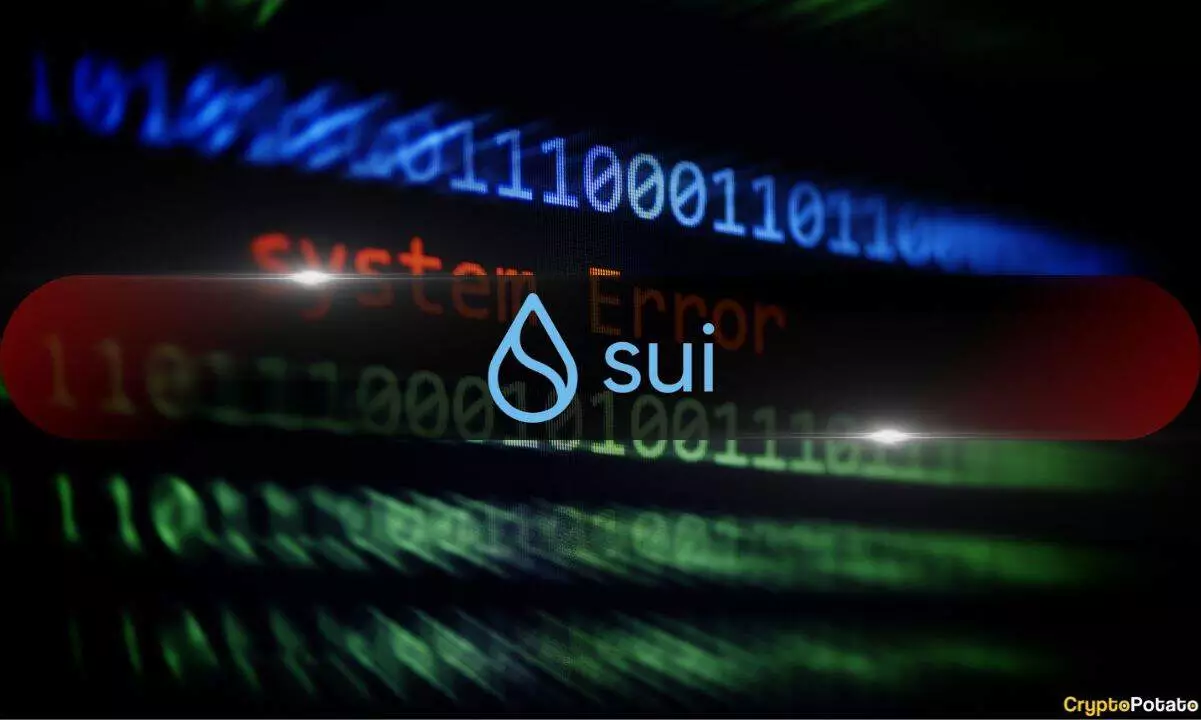In the realm of decentralized finance (DeFi), the Sui network has surged to prominence with unparalleled enthusiasm, marking a notable breakthrough in first-quarter 2025. It reported an average daily DEX volume of $304.3 million, representing a striking 14.6% quarterly increase that showcases the network’s burgeoning potential. One cannot help but be excited about such impressive figures, especially in a landscape often marred by volatility and uncertainty. Players like Cetus and Bluefin have emerged as the titan of this sphere, collectively contributing a staggering $239.5 million to this volume. The landscape of decentralized exchanges, still relatively nascent in its maturity, is beginning to resemble a legitimate financial ecosystem—one that warrants deeper analysis.
The Fragility of Success: SUI’s Market Performance
Despite the admirable achievements on the trading front, one glaring contradiction stands out: the underperformance of Sui’s native token, SUI. A net loss of 40.3%, reducing its market cap to $7.2 billion, sharply contrasts with the overall decline in the cryptocurrency market—an 18.2% fall. This dichotomy illuminates a cruel reality in investing. While decentralized exchanges may thrive, the native tokens supporting them could falter, often with catastrophic consequences for investors. It’s a cautionary tale that goes beyond numbers: it reflects a psychological and market sentiment that can sway drastically with news, events, and perceived safety.
Unraveling the Features of a Maturing Ecosystem
However, the systemic decline of SUI can’t solely be attributed to its inherent weaknesses; it should also involve an understanding of the broader market dynamics. The drop in network fees, which saw a staggering 33.3% decline to $3.6 million, signals a potential risk for validators who depend on these fees for earnings. This drop was propelled by reduced on-chain activity and a tangible decrease in user interest, creating cracks in what was otherwise a framework poised for explosive growth. The alarming shift serves as a cautionary reminder: a network’s success in volume does not necessarily correlate with sustained user engagement or long-term viability.
NFTs: A Silver Lining in an Unstable Environment
While the DeFi space exhibits unsettling fluctuations, it’s refreshing to note that Sui’s NFT market is flourishing. Total NFT trading volumes hit an impressive 13.2 million SUI since the mainnet launch, spearheaded by platforms such as Clutchy and TradePort. Collections like Fuddies and SuiFrens have captured significant attention, proving that even in the darkest hours, pieces of light persist. These NFTs not only provide an attractive alternative for investors and users but also demonstrate Sui’s ability to diversify its offerings, which is essential for sustaining interest in the network.
Institutional Interest: A Fractured Confidence
Amidst the rising chaos, some noteworthy institutional interests have undeniably validated the Sui ecosystem. Grayscale’s inclusion of SUI in its Smart Contract Platform Ex-Ethereum Fund offers an implicit endorsement from a highly respected asset manager. Yet, the dizzying heights of institutional engagement might feel far removed from the ground-level realities that everyday users experience. Instability, like that engendered by the recent $223 million exploit on the Cetus Protocol, poses existential threats that individual investors cannot overlook.
This incident, coupled with the promise of user compensation, shows just how fragile a community can be once foundational elements are compromised. The potential for recovery through an on-chain community vote to release $162 million in frozen assets offers a glimmer of hope, but risk management in such a volatile landscape remains paramount.
A DeFi Ecosystem in Delicate Balance
The juxtaposition of overwhelming achievements in trading volumes against the backdrop of price plummets and exploitative attacks creates a complex narrative about Sui. As it stands, one momentous quarter has birthed both anticipation and trepidation, compelling enthusiasts and skeptics alike to embark on a tighter analysis. Sui exemplifies the astonishing potential, yet the dangers intertwined within the decentralized finance space are equally compelling. For those who dare to tread the path of innovation in this burgeoning ecosystem, navigating these intricate dynamics will prove both thrilling and sobering.

